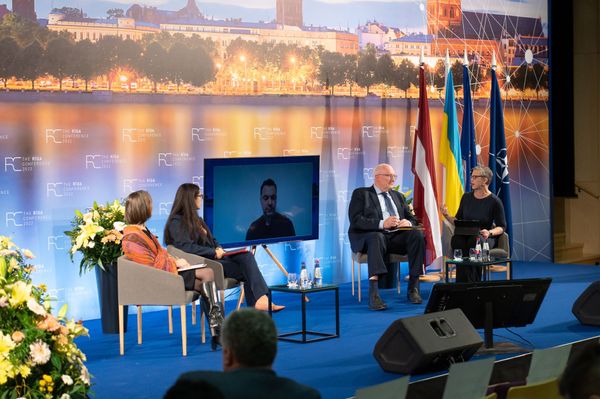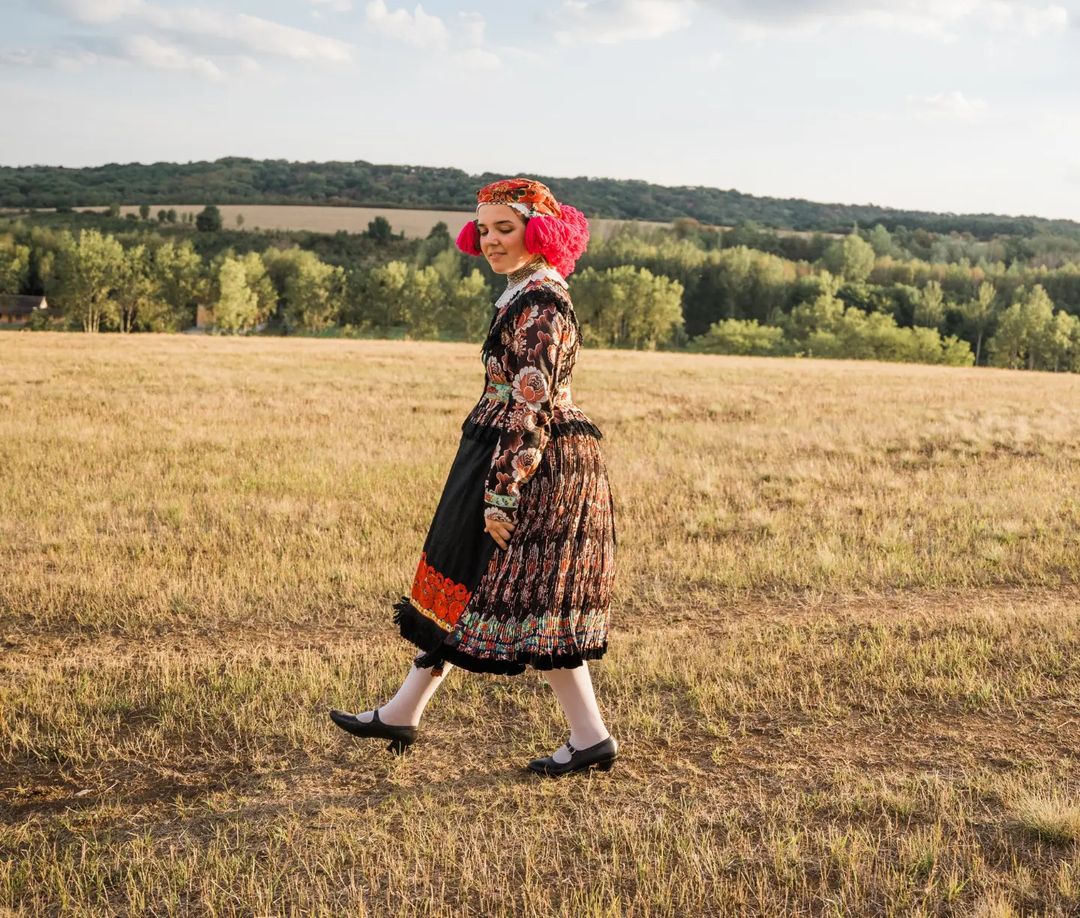Marielle van Luijk, also known as Holland Marcsi (Dutch Mary—the Transl.), came all the way from Utrecht, the Netherlands to Mátészalka, Hungary, where she focuses on playing folk-inspired classical music and collecting Hungarian folk costumes. Her story may seem quite unexpected at first, but as you get to know her, it becomes really clear why this is her true path. Interview.
You have Hungarian and Dutch ancestry, so you may have been influenced by the impulses of both cultures. Do you remember the moment when Hungarian folk art first made a deep impression on you? As a child, did you feel the difference between Hungarian and Dutch traditions?
My grandmother told me that when I was a little, I wanted to attend primary school in Hungary after kindergarten, so my mother enrolled me in a school in Dunaújváros that specialized in the Kodály method. Folk dance was part of the curriculum and I was completely mesmerized. I just stood there and watched how impressively the boys slapped their thighs, with such incredible energy! It was at that moment that I fell in love with this world. Every year, German exchange students visited this school, and in their honor, a mannequin was displayed in a Kalocsa folk costume. This colorful and very elaborate costume really burned into my memory. As for my Dutch roots, I always felt more connected to my Hungarian side, the cultural identity and the way of experiencing traditions are completely different in the Netherlands. However, since I’ve been living in Hungary, I’ve noticed that I am starting to appreciate my Dutch side more.
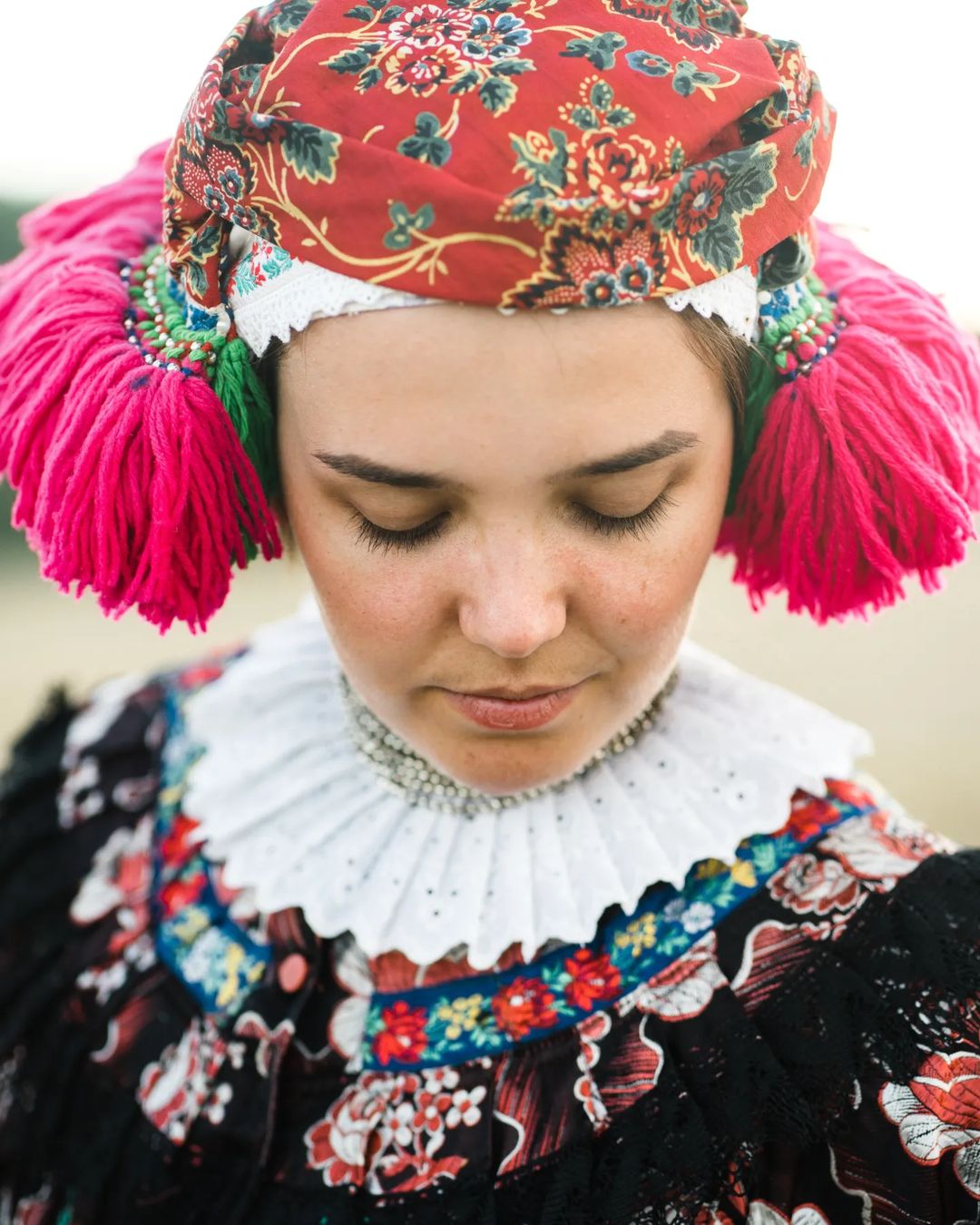
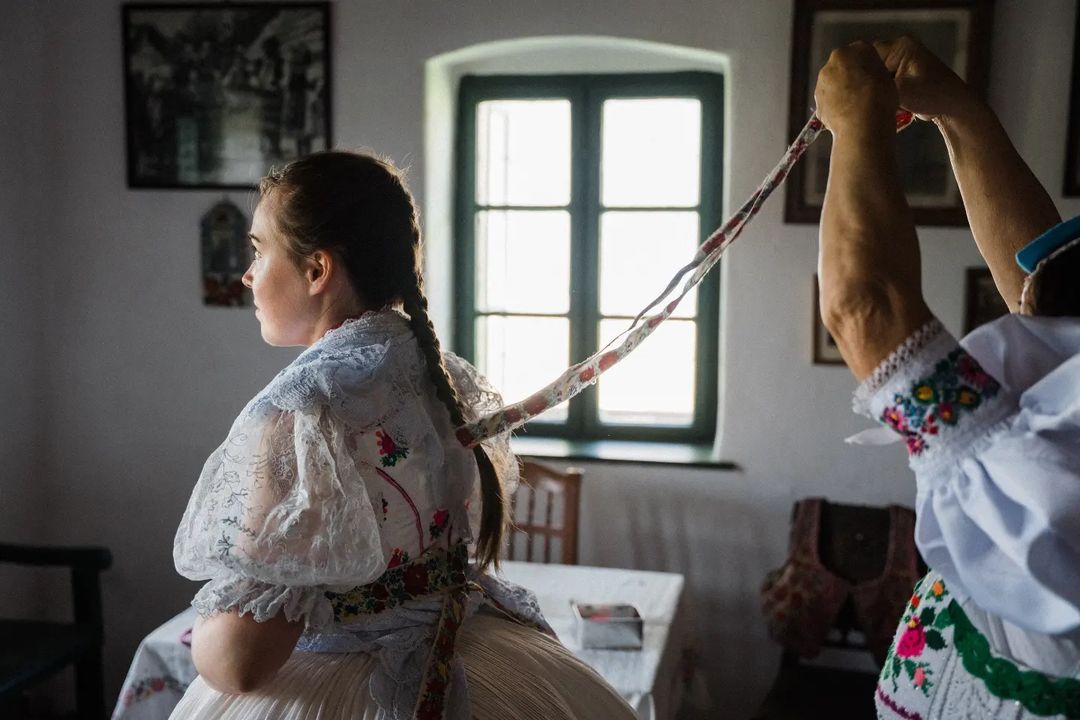
How did you start collecting costumes?
I bought my first authentic folk costume years ago in a folk dance store in Budapest. It was a Romanian ensemble from Negrești-Oaș to be precise, and I was very impressed by its rich embroidery. At that time, I didn’t know where it came from or if it was Hungarian at all. I chose it mainly for aesthetic reasons. For me, it’s more important to be attached to what I choose, instead of collecting costumes from every Hungarian village that exists. In general, I’m more drawn to the smaller Hungarian villages, because they are less well-known, which is a big plus for me, because I have always preferred unique things. Collecting folk costumes is my passion, I didn’t study ethnography, it is not my profession. When it comes to making decision in what to buy, I completely rely on my guts. Maybe that’s why I sometimes have ten complete folk costume from villages that I am very drawn to. I think it’s important to not only show the most ornate costumes, because they were only worn when going to church and not in everyday life or at festivities. For example, in one of my pictures I wore a young women’s mourning costume from Mezőkövesd, and I was told that it didn’t suit me, even though the color black in folklore life belonged to both younger and older generations—there were even black wedding dresses in certain villages.

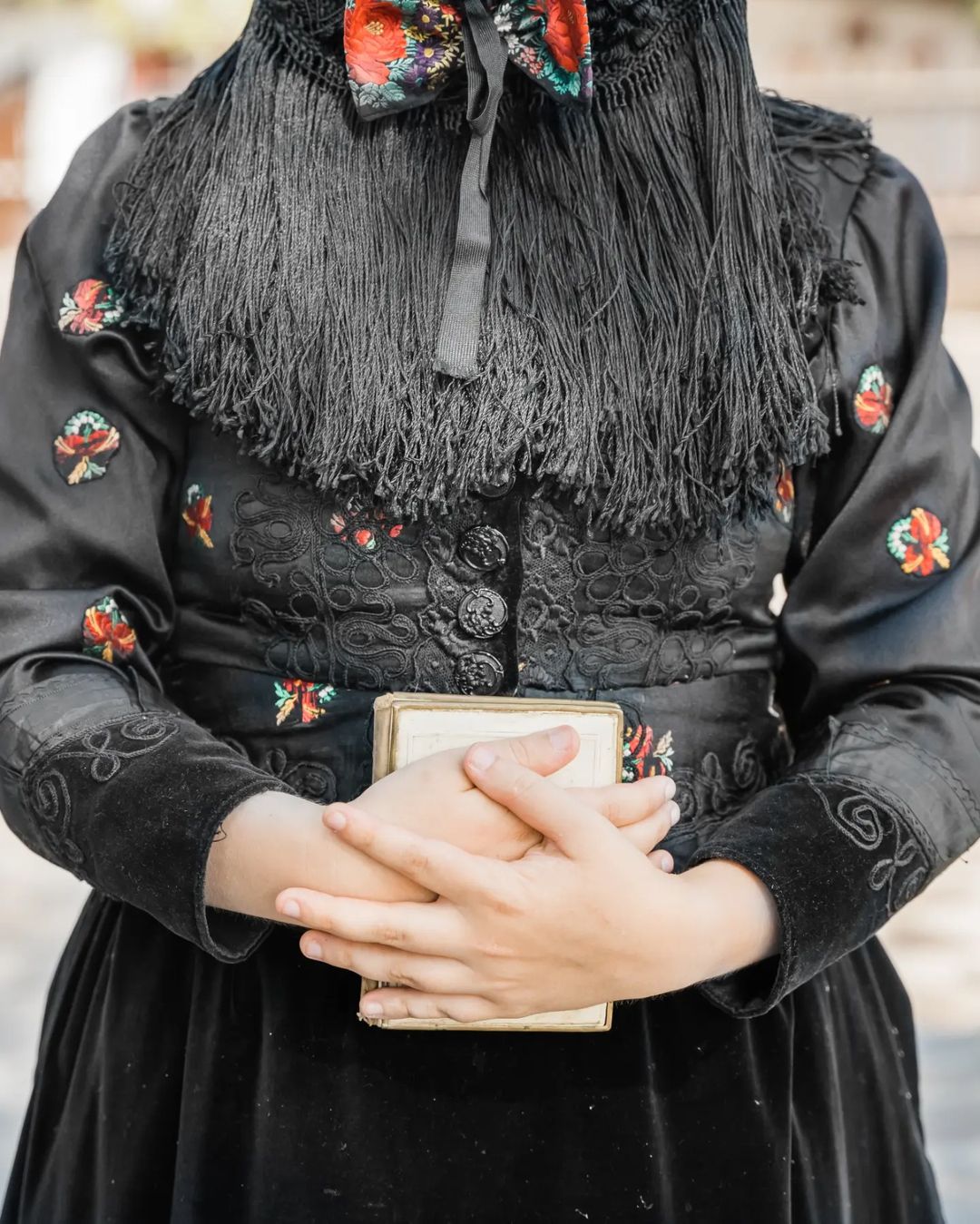
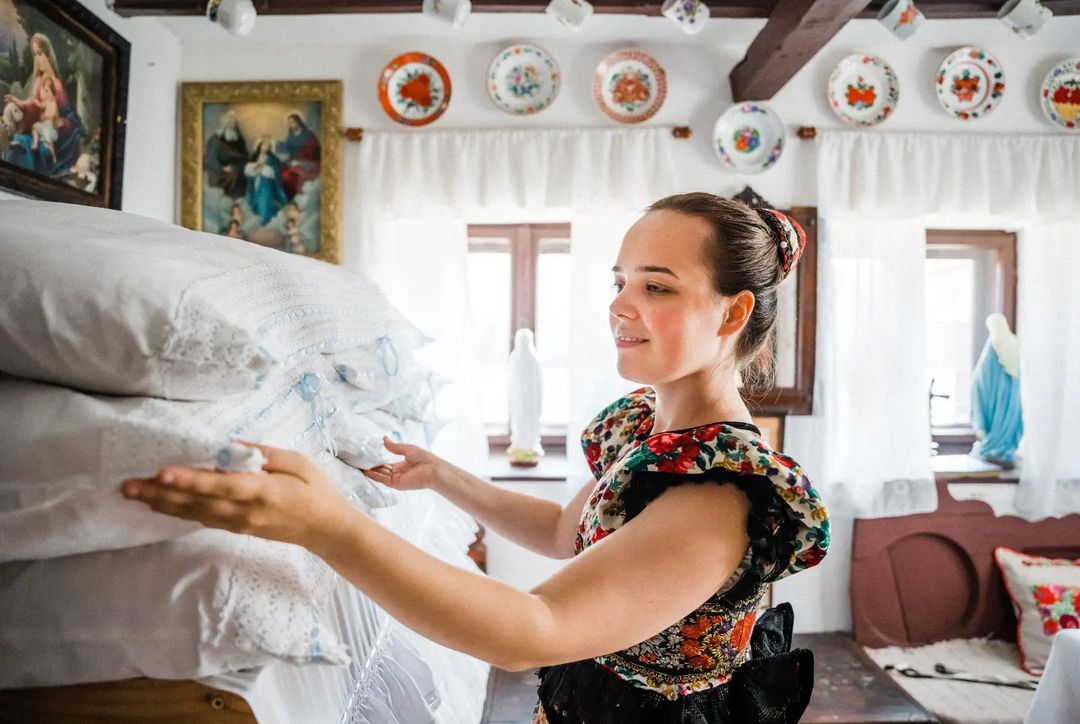
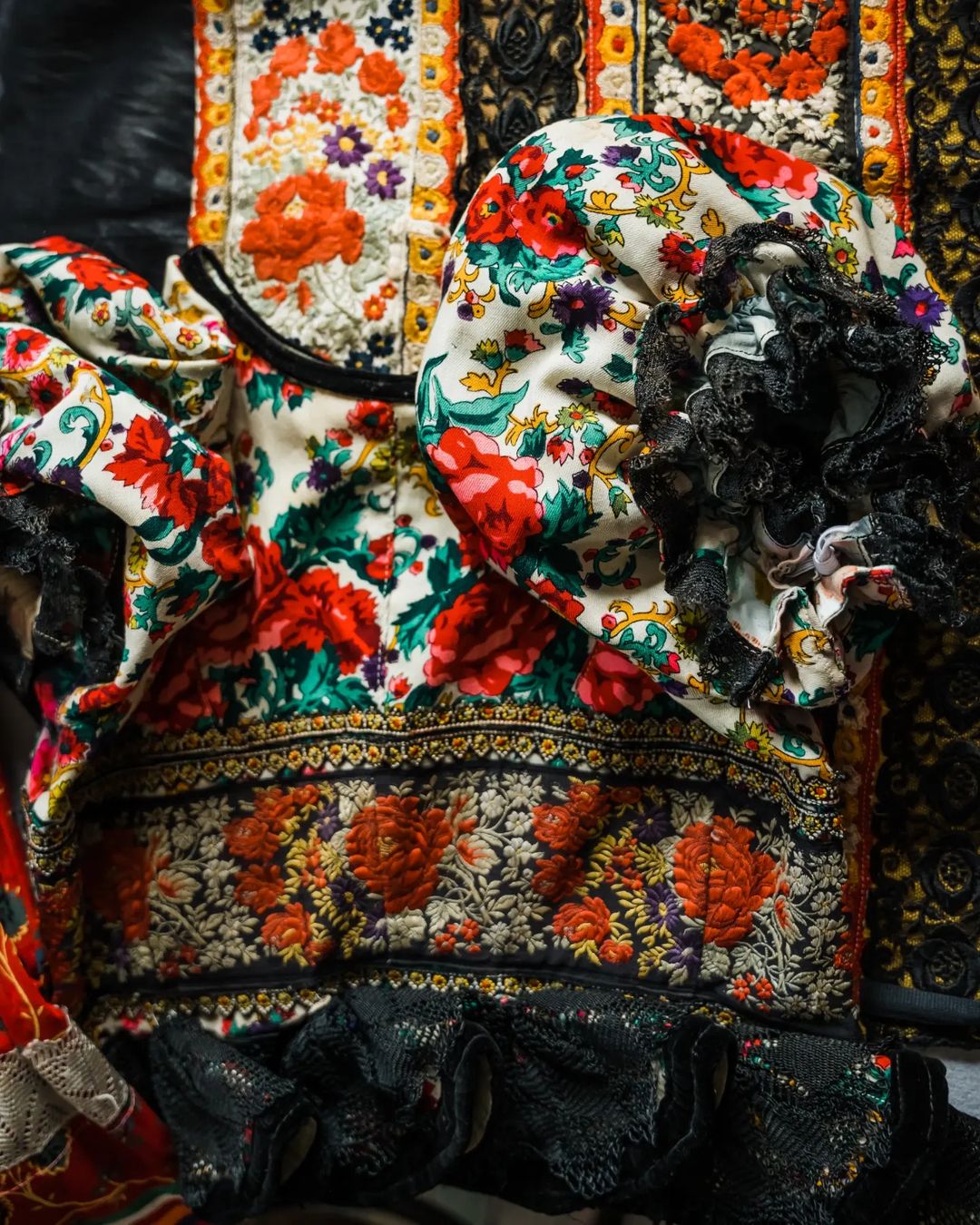
On Instagram, you usually share your folk costumes with your followers in an authentic setting. You also post some literature and archive photos. Do you do this more for educational purposes or do you just want to show others your passion?
To be honest, the reason that I started my account was to show my personal journey. It’s interesting that you mention this educational aspect because I am not conscious of it at all. The knowledge I have gathered all derived from books that I read and from the stories of older women, I am just trying to interpret it in my own way. I listen to these ladies with a truly childlike curiosity, and above all, with great humility. Perhaps the reason that my followers can easily identify with me is that I am an outside observer of this mystical world and I try to pass it on. I also try to draw a parallel between the past and the present. A while ago, I had to give a presentation in class where I drew parallels of how we perceive wealth. I started by showing a picture of Kylie Jenner with lots of Louis Vuitton bags around her. The audience immediately associated it with wealth. Then, I showed them a costume from Sárköz and asked them what kind of association this image evoked. They replied that it was “just” a folk costume. So, I explained to them that both are equal, what Louis Vuitton symbolizes now, was the expensive silk used for the costume back then, which costed an acre of land, or a cow. Human psychology remains the same over the years, only the means are different.

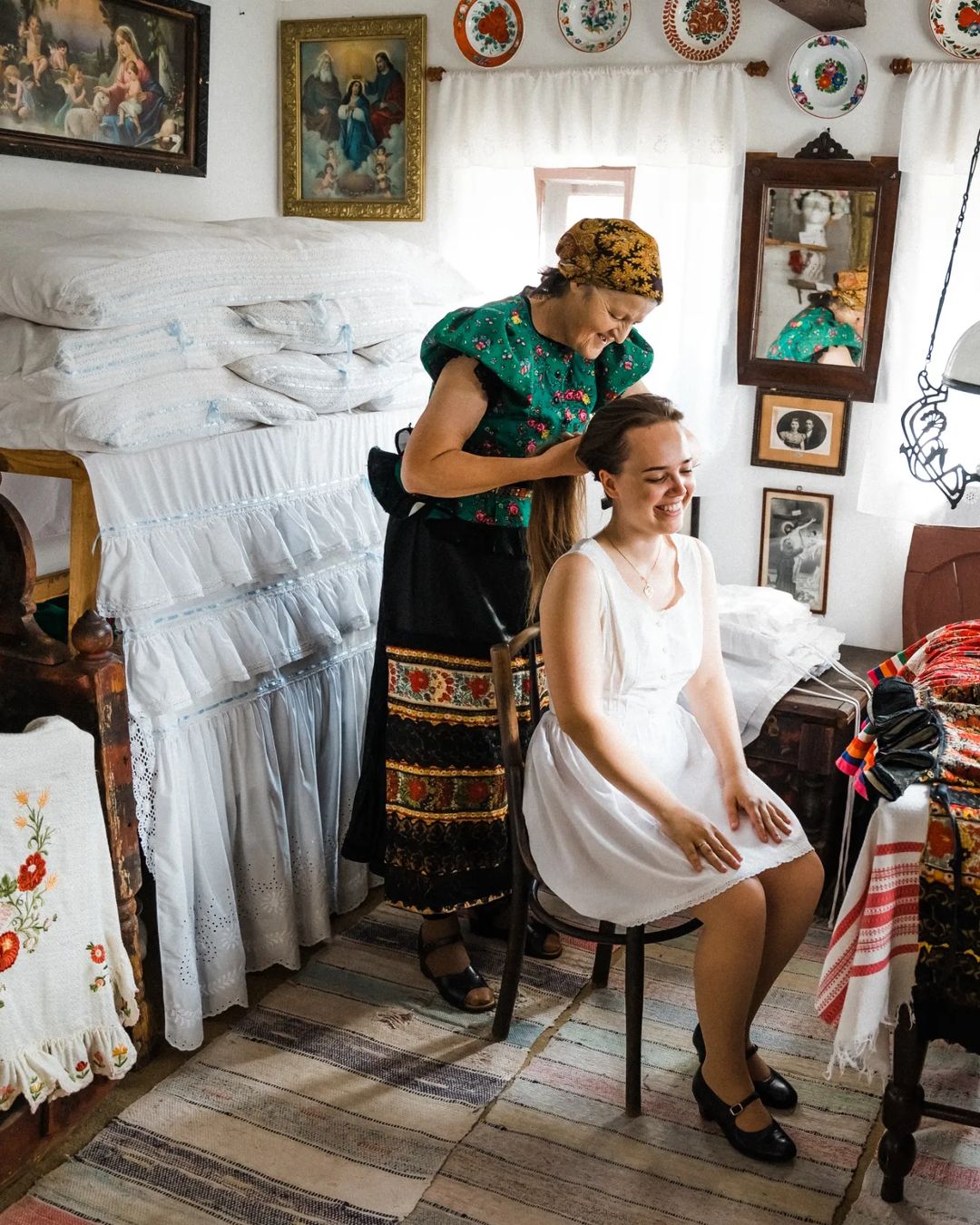
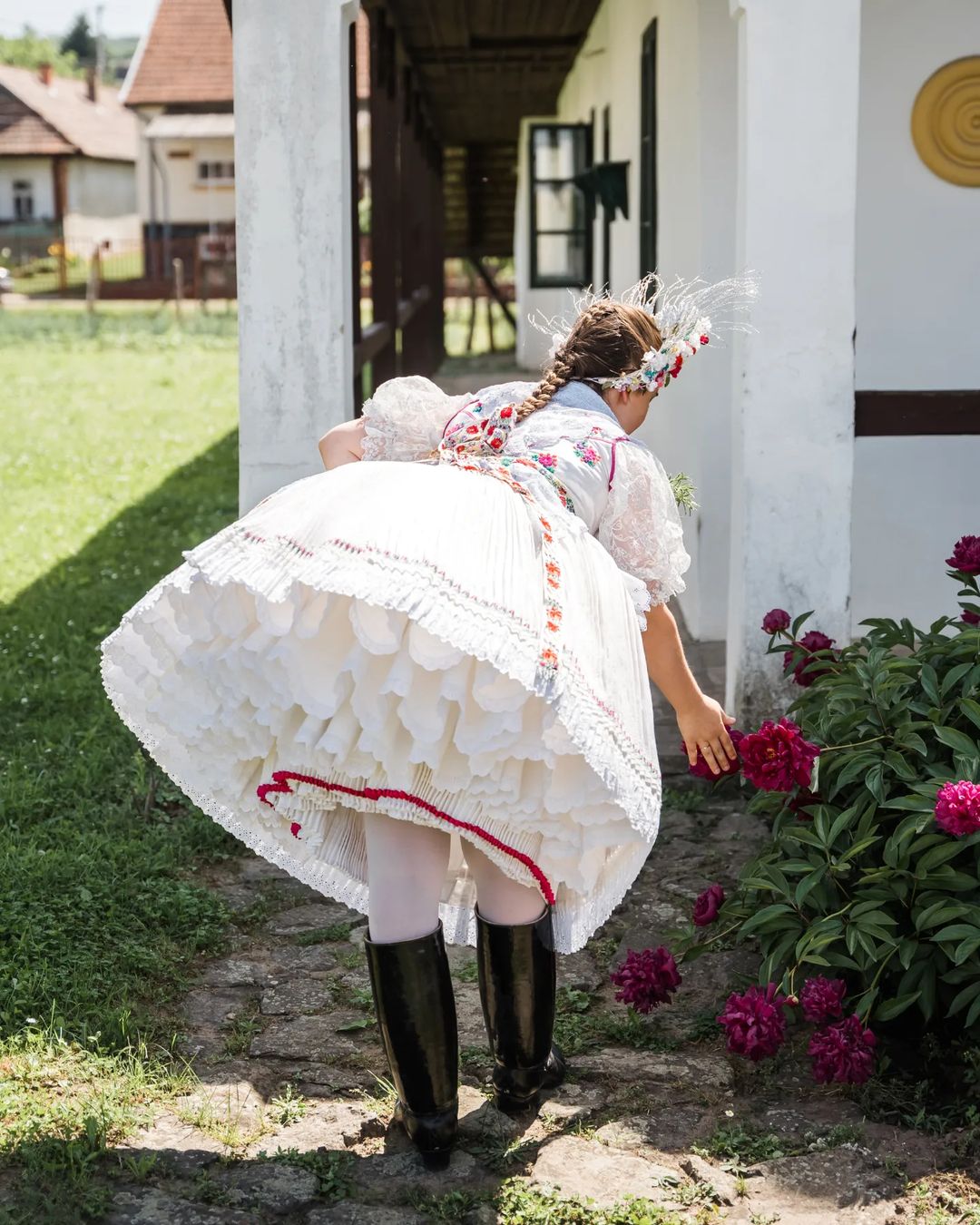
To have an insight into your collections, how do you get your clothes?
My collection mostly consists of pieces that were bought online from retailers. Believe me, I would be happier if I could buy directly from the women in the villages, but that is almost impossible. This is mainly because they want to keep certain pieces for their grandchildren, which is a good thing in my opinion. On the other hand, it is very difficult to get acquainted to these ladies. In the villages, there is a very tight network, so if you get lucky and they welcome you with open arms, they recommend you to others. In Méra, for example, I have already been acquainted to six different ladies.
Your other great passion is music. How much do you keep the authentic approach in this field?
My love of music has allowed me to maintain my attachment to folk culture, this was one of the few possibilities in the Netherlands. I grew up in a classical music environment, but even as a child, I loved playing folk-inspired classical music. There is a big conflict inside of me as to which to choose, authentic or classical music? However, I think I can draw from both genres, and that’s really who I am. I recently gave a concert in Mátészalka, which was very well received by the audience, and I feel like this is my path.
Folk art fusions are becoming increasingly popular in the fashion industry. Do you think they really help bring folk art into everyday life?
I’m a bit skeptical when it comes to these initiatives, personally, I think that they completely lack in context, which give the much-needed framework to folk costumes. There is a huge variety in Hungarian motifs, but unfortunately, the fashion industry processes only a selected few. In fact, they overuse the most well-known ones, and that is why most people might think that this is all that Hungarian folklore consist of, which has negative consequences.
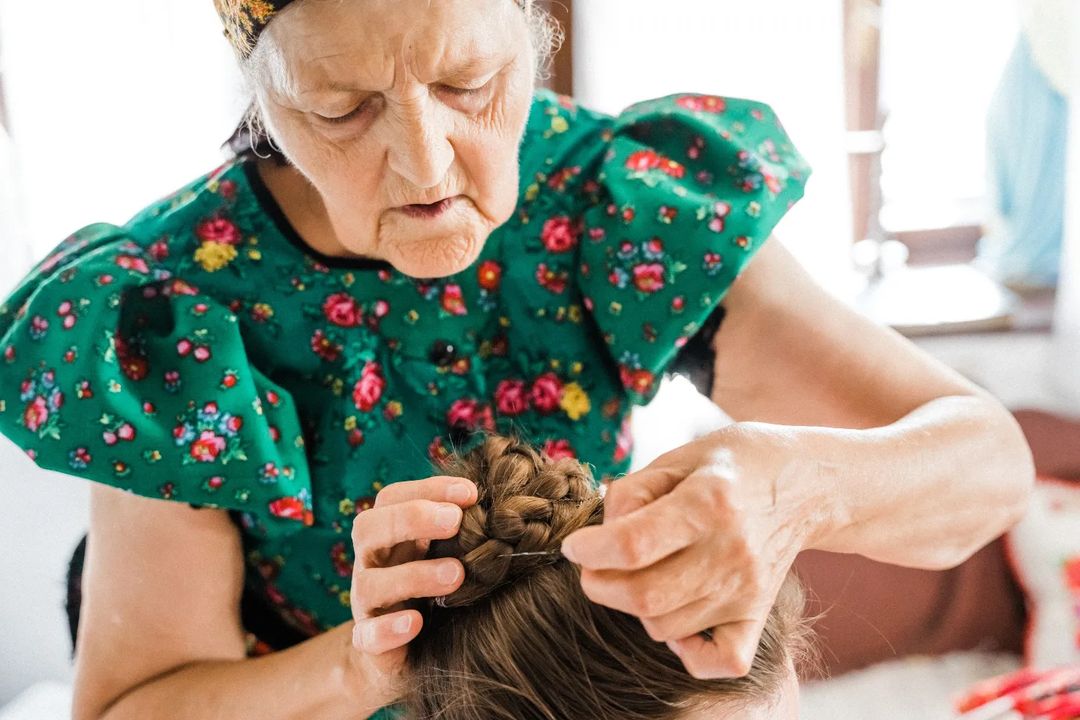
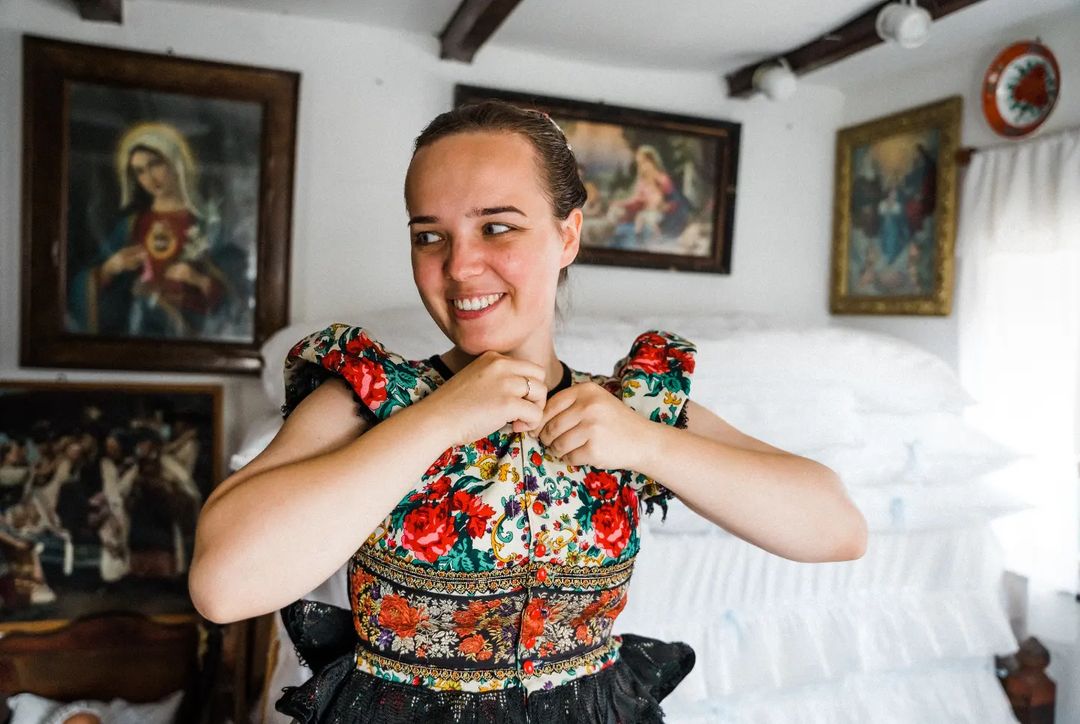


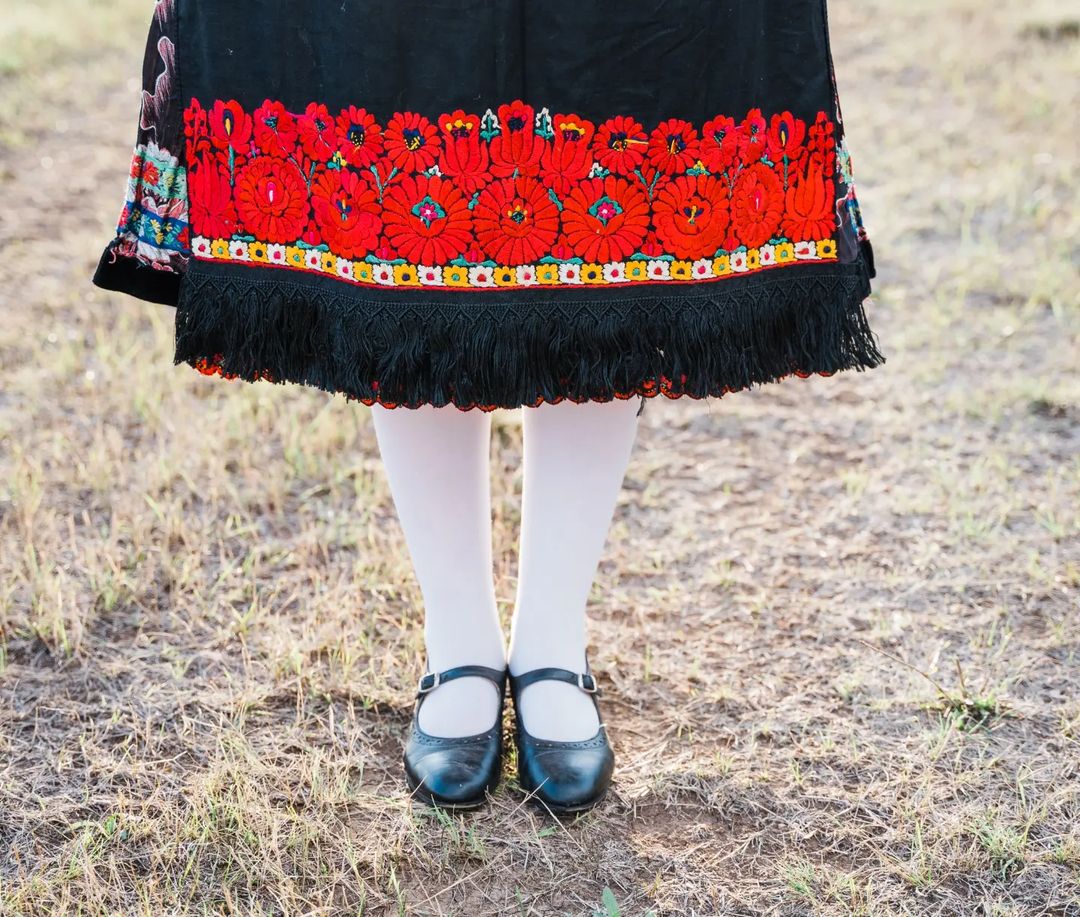
Most recently, there was a very successful collaboration between you and photographer Zsófia Mohos, who captures intimate moments of the countryside in her photo series. How did the collaboration go?
When I think of Zsófi’s work, the best way to describe it, is that she captures moments in such an extraordinary way that I have never seen before and I immeditately felt a strong aesthetic connection. I really wanted to convey this feeling to my followers, so I decided to step up my game and contacted her. Our first joint project was in Rimóc, where we both knew “Aunt” Margit, which made it easy to the both of us.
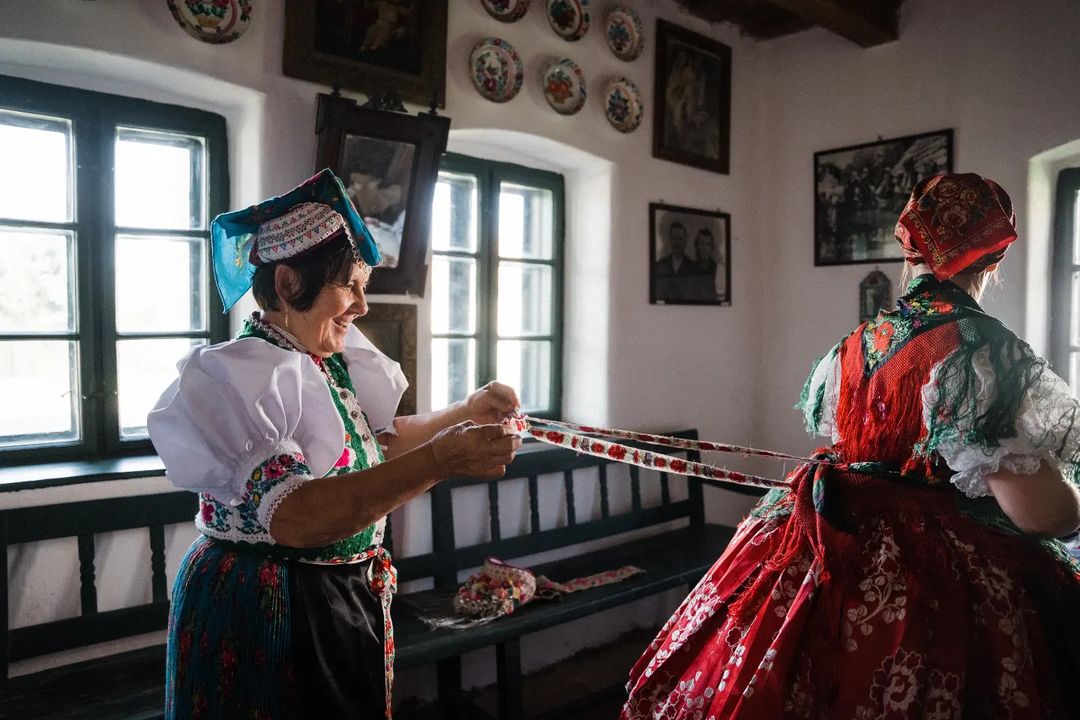
How are locals contacted?
For the other photo shoots, I established contact with the ladies beforehand. Zsófi was very happy about this, as we broadened her creative horizon with this project. It varies how we get to know them, but it’s important to meet them several times before the shooting takes place to make sure that the atmosphere feels natural. Mostly, they are very happy to see us because of our interest in their stories and knowledge.
How does it feel to be in this environment?
For me, not only the experience of dressing up, but also the preparation is an important, sacred ritual, which is indispensable. Zsófia’s photos give the illusion that I belong there, but to achieve this result I thoroughly research archive pictures and wear no make-up at all -thanks to this, I could internalize for example the Mezőkövesd body posture, as the girls radiated pride when walking in their folk costume. I’ve always been a huge history lover, so it was a cherished dream of mine to travel back in time one day, and with these photos, I feel like I could make this happen.
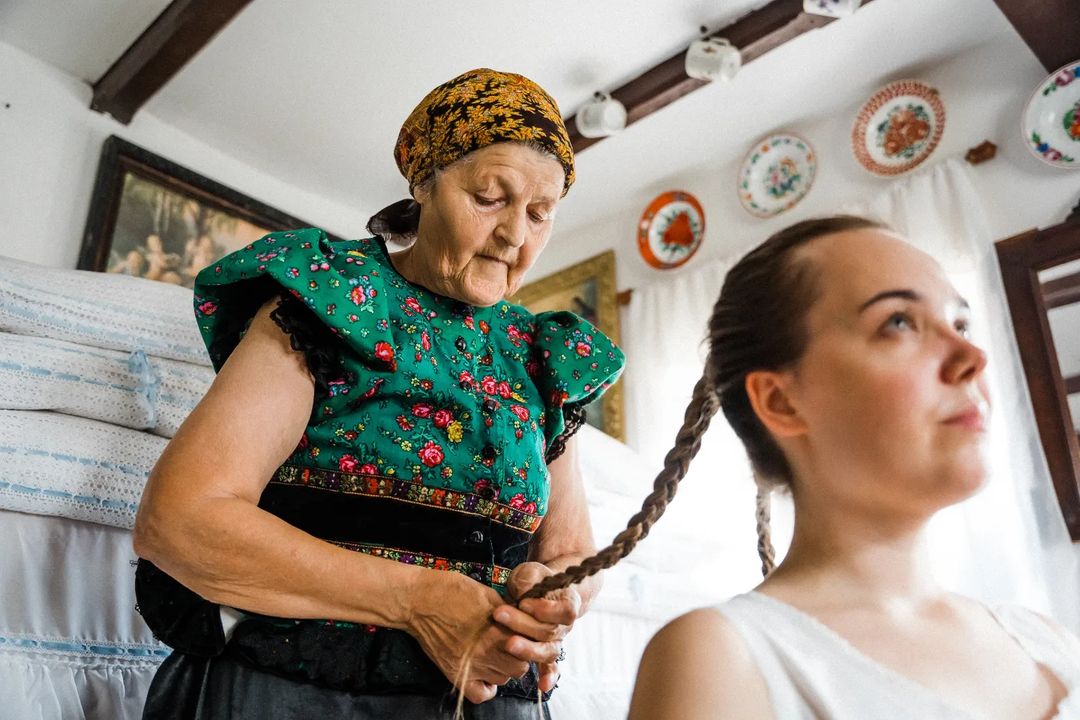

Photos: Zsófia Mohos
Holland Marcsi | Instagram

How much less do women earn in Central and Eastern Europe?
